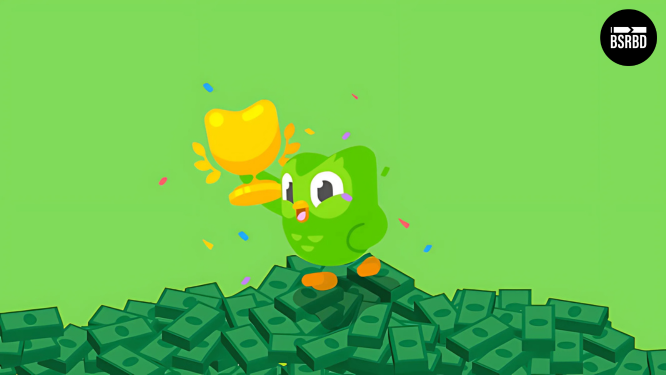Duolingo is one of the most popular language learning apps in the world, used by over 34 million people every day. With its fun approach to language learning, this app has helped millions make daily progress in languages while remaining entirely free. But even though most users don’t pay a dime, Duolingo still brings in around $500 million each year and has grown into a $7.7 billion company. So, how does a free app manage to be this successful, and is its strategy sustainable?
The Power of Gamification
If you’ve ever used Duolingo, you’ll know it feels more like a game than a traditional lesson. Users earn points, see progress bars, and are motivated by “streaks” that encourage them to return every day. This playful style has kept users engaged and coming back for more, helping the app attract about three million users in just a few years.
From the beginning, Duolingo’s mission was to provide a free, enjoyable way to learn languages. But as the app's user base grew, the company faced a challenge: how to make money without charging for its core content. In 2017, Duolingo introduced ads as a small revenue stream and launched a premium tier where users could pay $10 per month to remove ads and gain other perks. Surprisingly, this premium tier now brings in about 80% of Duolingo’s revenue, even though only about 9% of its users pay.
A/B Testing and AI: The Perfect Combo for Engagement
Duolingo’s success isn’t just about fun lessons and a friendly green owl mascot. Behind the scenes, Duolingo relies on advanced techniques like AI, A/B testing, and personalized push notifications to keep users hooked. Duolingo constantly tweaks the app to understand what makes people return. For example, AI-driven algorithms decide the best times to send notifications to different types of users, reminding them to continue their language journey.
One notable trick? The app’s notifications sometimes guilt-trip users who’ve missed a lesson. A popular one even says, “These notifications don’t seem to be working. We’ll stop sending them for now.” This tactic works incredibly well, bringing a 3% increase in user retention simply because people feel a bit guilty about neglecting their studies.
How AI Helps Improve Learning
One of the most interesting things about Duolingo is how it personalizes the experience for each user. The app collects data from billions of exercises and uses it to improve the experience continuously. The AI can even adjust the difficulty of lessons based on how users are performing, ensuring that everyone is challenged at just the right level. The more data Duolingo collects, the better it can tailor the learning experience for each person, making the app feel like it “knows” what each learner needs.
More than Just Ads and Subscriptions
While ads and subscriptions are Duolingo’s main revenue sources, the company is exploring other options. Recently, Duolingo launched a new premium feature called “Duolingo Max,” which costs $30 a month and offers AI-powered role-playing exercises. This feature lets users practice with virtual “conversation partners,” something the app tried in the past with real human tutors. However, people seem more comfortable speaking with AI, possibly because they don’t feel judged.
Is Duolingo’s Free Model Sustainable?
Despite its popularity, Duolingo faces the challenge of maintaining growth. Most users are learning languages for free, and only a small fraction pay. Although the company could push harder to convert more free users into subscribers (for example, by increasing the number of ads), it has decided to balance revenue with growth. Duolingo’s strategy remains to make language learning accessible to as many people as possible, and adding too many barriers could ultimately slow down its success.
Duolingo’s journey from a fun, free app to a multi-billion dollar business highlights the power of creativity, AI, and understanding user behavior. By keeping users engaged with gamification, personalized notifications, and thoughtful A/B testing, Duolingo has set the standard for language learning in the digital age. For now, it seems that Duo the owl will keep reminding us all to hit our language goals—for free.

